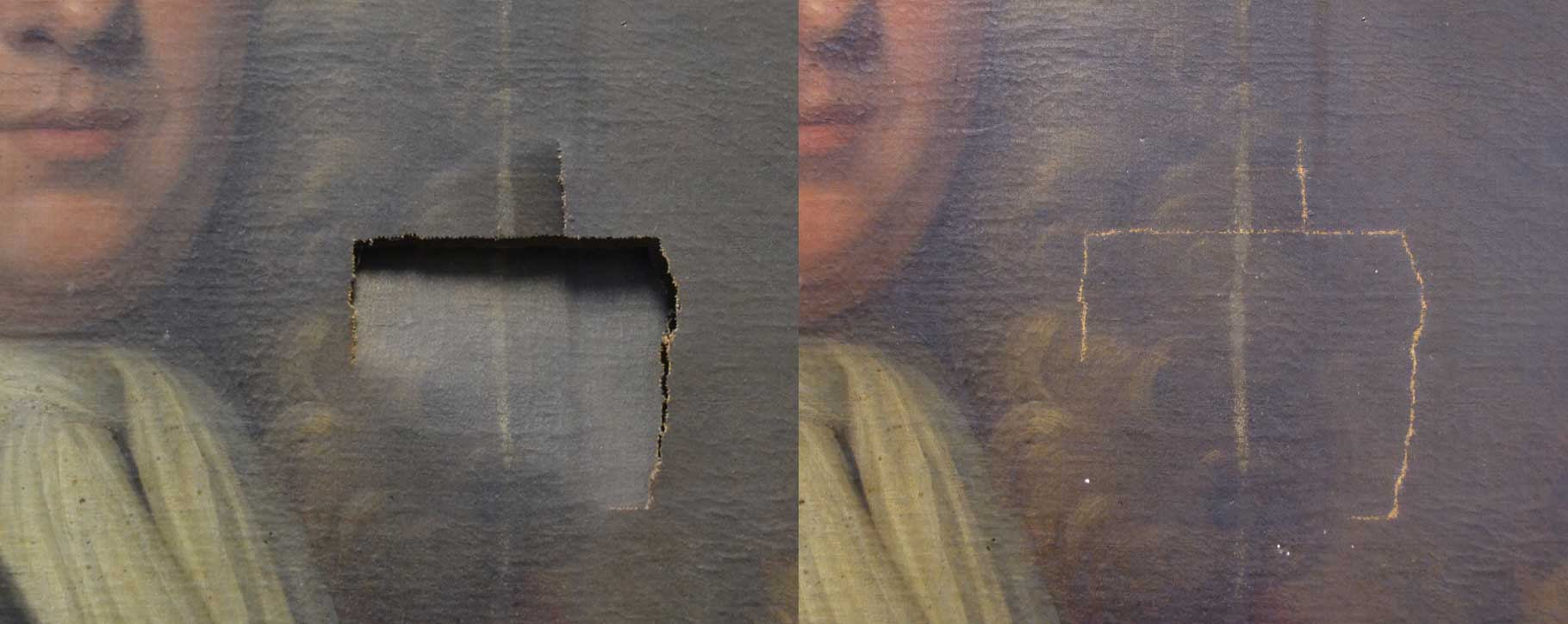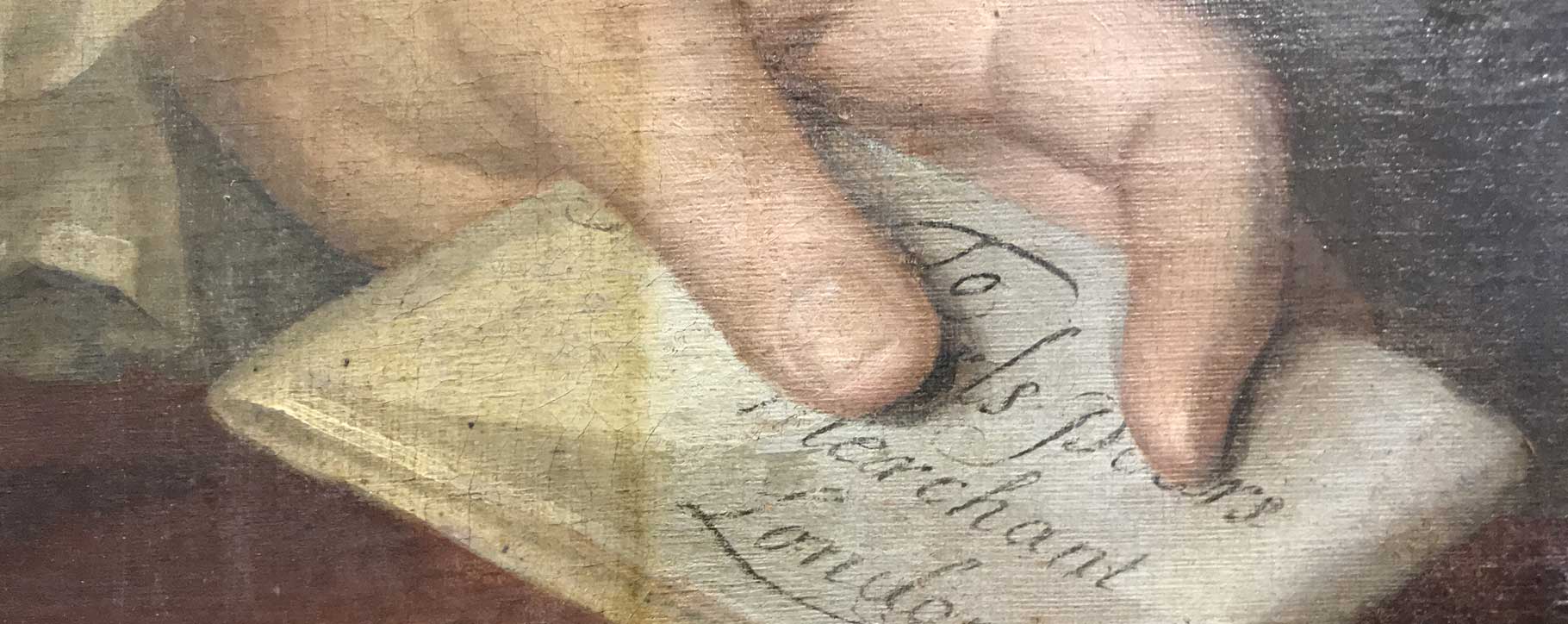When Mr Peers’ painting arrived in the studio, our conservators immediately realised the potential restoration had to return the artwork to its original stately manner. At one and a half metres by one metre, the artwork is an imposing portrait of one of Mr Peers’ ancestors, a merchant from London. Typical of the Kneller portrait style the subject is partially sheltered in a cove, he points towards the ships that would have been fundamental in obtaining his wealth and status as a successful merchant.

Studio Assessment
After an in-depth studio assessment, our conservators recorded the multiple treatments the artwork required. The most evident damage was the tear, likely made after a heavy impact against the canvas. The two white stripes running vertically down the painting were most likely water trails, and the painting was also flecked with a white substance, possibly paint.


An intensive clean would be needed to remove years of dirt and contaminants, and a couple of areas of lost paint required treatment. It was also apparent that the painting was not comfortably attached to the stretcher bars, and had caused subsequent buckling in the top left corner. Furthermore, the painting was not positioned correctly within the frame, as highlighted by the obvious gapping running between the top edge of the painting and the frame.
After removing the painting from the frame, it was apparent that the canvas on the margins of the painting had worn away and did not properly reach around the stretcher bars. It was therefore not possible to properly re-tension in order to decrease the buckling. If the margins of the canvas continued to be abraded, so too could the main surface of the painting. This could consequently lead to key details of the painting becoming lost. Our conservators also found that the canvas was glued as well as nailed to the stretcher bars.


To bring back the structural stability, we recommended strip-lining the painting to our client. Strip-lining is when only the edges of the canvas are lined with new canvas to reinforce the original in instances of damage. This would successfully ensure that the painting was entirely structurally sound, and not risk the painting being damaged further.
For the frame, a clean was suggested to remove the accumulation of dirt and dust. For the decorative losses, these areas could be remoulded and patinated to suit the style and age of the frame. Stabilising the mitre joints would additionally prevent movement of the artwork when reinstalled in the frame.
Restoration
The first part of the treatment we carried out was to repair the tear using a thread by thread method, where the individual fibres of the tear are brought back together and re-aligned. The tear is then bonded using heat treatment. In the below right photograph, you can see how the tear looks after the repair is complete.


With the tear now mended, we focused our attention on the remaining structural work and strip-lined the painting to provide much-needed support where the canvas was deteriorating. Where the original canvas is now attached to the new, it is possible to see how close parts of the painting came to being lost. We also added new keys to the stretcher bars and fishing wire to provide additional strength. Re-attaching the canvas to the stretcher bars and correctly tensioning the painting also addressed the buckling on the top corners of each painting. With the structural work complete, we began the varnish removal and cleaning stage of the restoration.
Firstly we created small ‘windows’ on the painting to find the most effective solvent for removing the surface dirt. This was carried out across multiple parts of the painting, to account for the differences in the condition of the paint layer and pigments. The difference achieved after a full clean and varnish removal was fantastic and it revived the key parts of the painting such as the address on the letter and the detailing on the ships that had been obscured. The cleaning also removed the two (likely water) marks running down the painting and the white flecked substance.


Following the clean and varnish removal, we moved on to applying a filler to the tear repair on the area of the exposed canvas. Once this was prepared we could carefully pigment match against the original paint layer to retouch this area. The final step of the restoration of the painting was to re-varnish to provide a protective and lasting finish for the painting.



We were delighted to restore this impressive painting and preserve an important piece of Mr Peers’ ancestral history.
If you have a painting requiring similar restoration, please contact us for our obligation-free advice and recommendations.






